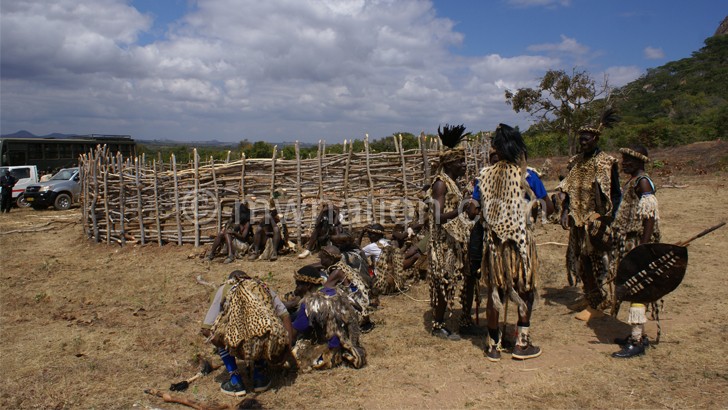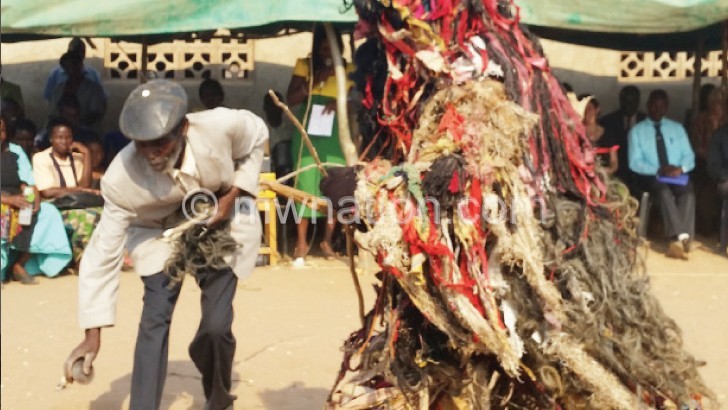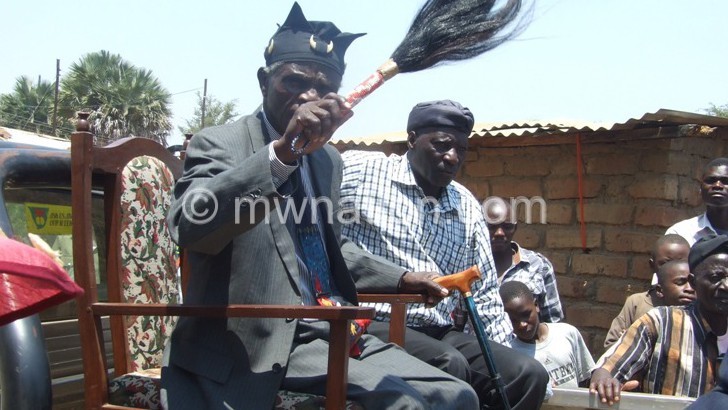A taste of cultural freedom
Last week’s Umthetho Cultural Festivals brought together Ngonis from Tanzania, Zimbabwe, Zambia and South Africa, but the Tanzanian dignitaries could not hide their joys and sorrows. Our Mzuzu Bureau Supervisor JAMES CHAVULA writes.

In their creed, Ngoni culture warriors speak of four cornerstones: ingoma dance, meat, booze and women. However, it is the dressing of Ingoma dancers that captivated Ngoni tribesmen from Tanzania at this year’s Umthetho Cultural Festival at Hora Mountain Heritage Site in Mzimba on Saturday.
They came, they saw the annual celebration of everything good about Ngoni culture and they counted their losses in stammering confessions.
“It is captivating seeing how our colleagues in Malawi are celebrating their culture. We are particularly impressed with how the ingoma dancers are dressed and we would love to see people dressing the same. If we want to celebrate our culture, then we must use the real ligalia and props, not fakes,” said Inkosi Zulu Gama of Songea.
The leather garbs were not a stand-out feature in the shadow of the historic mountain, the epicentre of early ngoni settlement in Mzimba. It was the most prevalent wear.
However, one reality was stunning in the abundance of the hides and it resembled the phenomenon Zulu-Gama left Zulu-Gama shuddered to see: Some of the stunning dancers were actually wearing prints fashioned from cloth with leopard spots.
“Forests are vanishing and wild animals, including leopards, are almost nonexistent,” said Moses Jere, a member of the one-time military dance with spears and cow-hide shields among its props.
Protecting the waning population of animals that make Malawi, Tanzania and the rest of southern Africa a unique tourism destination is one of the reason the neighbouring country wear cloth material instead of the historic skins, said Zulu Gama.

But a cloth with leopard-like dye could be better than none. So may be softened goat skins and cows’.
“Back home, our dancers wear pieces of red cloth,” said the traditional authority.
He explained: “An opinion is widespread that this will safeguard leopards and wild animals from poaching, but it began as a crackdown on our culture.”
In his words, the crackdown began at the height of the fight for self-rule when German administrators hanged Inkosi Mputa I and other traditional authorities opposed to colonialism.
The red cloth is partly a tribute to Mputa and those who were martyred in the famous Maji-Maji Uprisings between 1905 and 1907, he said.
The story of Maji-Maji heroes could be likened to that of Malawians who were killed by British colonial forces at Nkhata Bay Harbour on March 3 1959 and the Mau Mau warriors who died fighting British rule in Kenya round the same time. Their innocent blood was catalytic of the emancipation of Africans from the yoke of European minority regimes.
“Mputa is a cult hero and many people visit his grave in Songea to pay homage to his gallant contribution to Tanzania’s independence,” said the fallen icon’s grandson, Inkosi Mputa III.
According to him, it is overwhelming seeing Ngonis wear red in honour of his granny.
However, the crimson cloths might as well be flags immortalising how African culture and its symbols suffered during the struggle.
The colonial rulers might have banned some gatherings and dressing to eliminate flashpoints of rebellion and uniting factors during cultural elites’ insurgency, but the chiefs say the African way of life in Tanzania further suffered a devastating knock when founding president Julius Nyerere banned the chieftaincy system.
The nationalist leader reportedly announced the ban to create a level-field for nations unity, a prerequisite for his Ujama socialist humanism philosophy.
The chiefs from Tanzania said the Ngoni leaders and other tribal heads are opposed to the policy because it waters down culture and social cohesion.
“Presently, nearly all tribal leaders are petitioning hard for restoration of the chieftaincy system. It is enviable that Malawians are free to celebrate their culture and identify with their chiefs,” he said.
The right to celebrate culture got a boost when President Mutharika commended Inkosi ya Makosi Mbelwa and other chiefs in Mzimba for organising Umthetho to preserve and promote their culture. In Mutharika’s reasoning, every tribe needs to rejoice in their uniqueness.
According to Minister of Information, Tourism and Culture Kondwani Nakhumwa, promoting cultural events has the potential to generate foreign currency through cultural tourism.
“Government will work hand in hand with Mzimba Heritage Association to uplift Hora Mountain as a tourism attraction,” said the minister.
The time-honoured ambitious plans took off in style on the eve of Umthetho when Paramount Chief Mbelwa ascended Hora not only to drink umcwala and enjoy ingoma from a sacred high point, but to launch construction of a campsite for tourists and researchers visiting the mountain where Ngonis annihilated Tumbukas with rockslides.
“We envisage the campsite being followed up with a royal hotel, cultural village, stadium and other attractions,” said Ndabazake Thole, the secretary general of the heritage association.
However, the underdeveloped state of Umthetho shrine was discernible in freshly cut stumps and grass on the venue that confirm it becomes a deserted bush when the carnival is over.
Things cannot go on this way, says Inkosi Mpherembe .
“We can do better,” he says. “We hope to have permanent structures if everything goes according to plan.”
The chiefs from Tanzania, who celebrate their culture in February, offered more the reason to invest in adding the missing spices to the melting pot of culture.
Said Zulu-Gama: “The number of people and nations represented at Umthetho festival confirms its magnetism and importance.”





